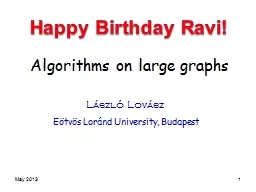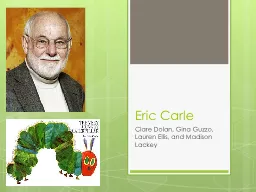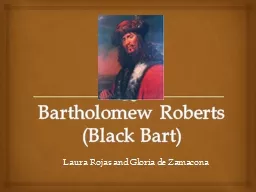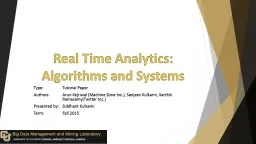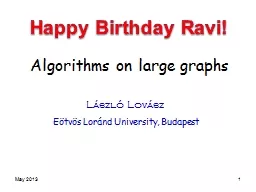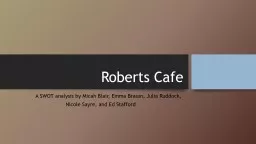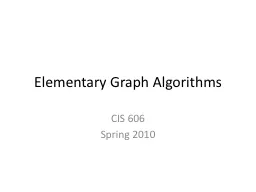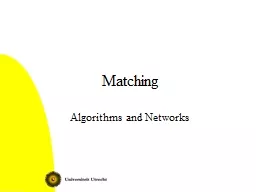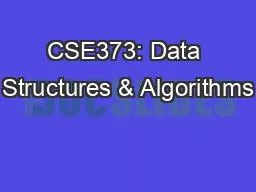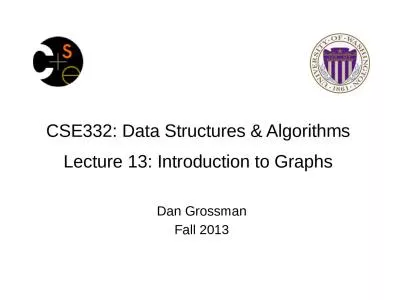PPT-Graph Algorithms Eric Roberts
Author : broadcastworld | Published Date : 2020-08-07
CS 106B February 27 2013 Outline A review the graphtypesh and graphh interfaces 1 E xamples of depthfirst and breadthfirst search 3 Dijkstras shortestpath algorithm
Presentation Embed Code
Download Presentation
Download Presentation The PPT/PDF document "Graph Algorithms Eric Roberts" is the property of its rightful owner. Permission is granted to download and print the materials on this website for personal, non-commercial use only, and to display it on your personal computer provided you do not modify the materials and that you retain all copyright notices contained in the materials. By downloading content from our website, you accept the terms of this agreement.
Graph Algorithms Eric Roberts: Transcript
Download Rules Of Document
"Graph Algorithms Eric Roberts"The content belongs to its owner. You may download and print it for personal use, without modification, and keep all copyright notices. By downloading, you agree to these terms.
Related Documents


